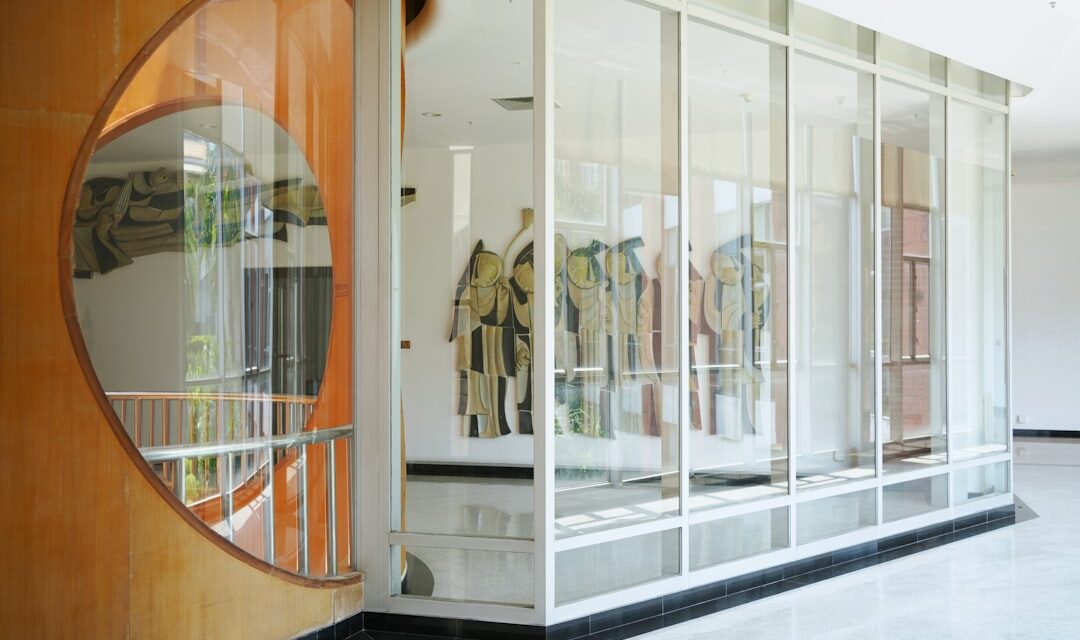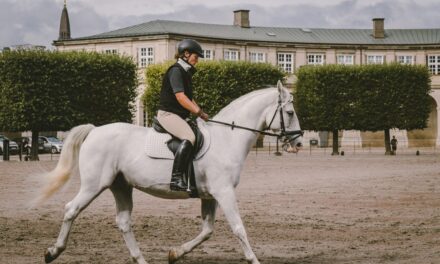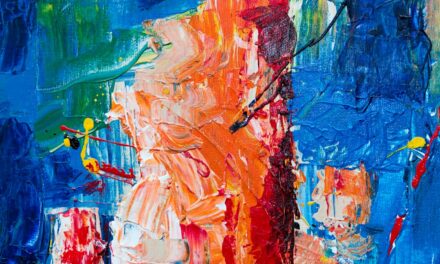The National Museum of Art of Romania, located in Bucharest, has a rich and storied history that reflects the cultural evolution of the nation. Established in 1948, the museum was born from the amalgamation of several art collections, including the former Royal Palace’s art collection and the National Museum of Romanian Art. The Royal Palace itself has a history that dates back to the 17th century, serving as a residence for Romanian royalty and a venue for significant cultural events.
The transformation of this historic site into a museum marked a pivotal moment in Romania’s commitment to preserving and showcasing its artistic heritage. The museum’s establishment was not merely an administrative decision; it was a response to the need for a national institution that could curate and display Romania’s artistic achievements. The post-World War II era saw a surge in national identity and pride, prompting the government to invest in cultural institutions.
The museum’s collections were significantly enriched over the years through acquisitions, donations, and bequests, reflecting both local and international art movements. This evolution has allowed the museum to become a central hub for art lovers and scholars alike, fostering an appreciation for Romanian art while also engaging with broader European artistic trends.
Summary
- The National Museum of Art of Romania was founded in 1948 and is located in the former royal palace in Bucharest.
- The museum’s architecture combines neoclassical and baroque elements, with a grand central staircase and ornate ceilings.
- The permanent collections at the museum include Romanian medieval and modern art, as well as European art from the 15th to 18th centuries.
- The museum hosts temporary exhibitions and events, showcasing contemporary art and international collaborations.
- Educational programs and workshops at the museum cater to all ages and include guided tours, art classes, and lectures.
Architecture and Layout of the Museum
The architectural design of the National Museum of Art of Romania is as captivating as the artworks it houses. The museum is situated in the former Royal Palace, a neoclassical structure that was extensively renovated in the mid-20th century to accommodate its new role as an art institution. The façade of the building is characterised by grand columns and intricate detailing, embodying the elegance of neoclassical architecture.
Visitors are often struck by the imposing presence of the museum, which stands as a testament to Romania’s historical grandeur. Inside, the layout of the museum is thoughtfully designed to enhance the visitor experience. The galleries are spacious and well-lit, allowing for optimal viewing of the artworks.
The museum is divided into distinct sections, each dedicated to different periods and styles of art. From medieval religious icons to contemporary pieces, the layout facilitates a chronological journey through Romanian art history. Additionally, the museum features a central atrium that serves as a gathering space for visitors, often hosting events and temporary exhibitions.
This architectural blend of historical significance and modern functionality creates an inviting atmosphere for both casual visitors and serious art enthusiasts.
Permanent Collections at the Museum
The permanent collections at the National Museum of Art of Romania are a treasure trove of artistic expression, showcasing works from various periods and styles. One of the most significant sections is dedicated to Romanian medieval art, which includes an impressive array of religious icons and frescoes that reflect the spiritual life of the time. These pieces not only highlight the technical skills of Romanian artists but also provide insight into the cultural and religious influences that shaped their work.
In addition to medieval art, the museum boasts an extensive collection of modern Romanian art from the 19th and 20th centuries. This includes works by renowned artists such as Nicolae Grigorescu, who is often regarded as the father of modern Romanian painting. His landscapes and portraits capture the essence of Romanian life and nature, offering a glimpse into the country’s evolving identity during this transformative period.
The collection also features notable contributions from other influential artists like Theodor Aman and Ion Andreescu, whose works further illustrate the rich tapestry of Romanian artistic heritage.
Temporary Exhibitions and Events
The National Museum of Art of Romania is not only a custodian of permanent collections but also a vibrant venue for temporary exhibitions that explore diverse themes and artistic movements. These exhibitions often feature both Romanian and international artists, providing a platform for contemporary dialogue within the art community. For instance, recent exhibitions have focused on modernist movements, showcasing how Romanian artists have engaged with global trends while maintaining their unique cultural identity.
Events at the museum are equally dynamic, ranging from artist talks and panel discussions to workshops aimed at fostering creativity among visitors. These initiatives encourage public engagement with art, allowing individuals to connect with artists and curators on a personal level. The museum also collaborates with various cultural institutions to host festivals and special events that celebrate specific artistic themes or anniversaries, further enriching Bucharest’s cultural landscape.
Educational Programs and Workshops
Education is a cornerstone of the National Museum of Art of Romania’s mission, with a variety of programmes designed to engage audiences of all ages. The museum offers guided tours tailored to different age groups, providing insights into both the permanent collections and temporary exhibitions. These tours are often led by knowledgeable guides who can share fascinating anecdotes about specific artworks or artists, enhancing visitors’ understanding and appreciation.
In addition to guided tours, the museum hosts workshops that encourage hands-on learning experiences. These workshops cover various artistic techniques, from painting to sculpture, allowing participants to explore their creativity in a supportive environment. Special programmes are also organised for schools, where students can learn about art history while engaging in practical activities that complement their curriculum.
By fostering an appreciation for art through education, the museum plays a vital role in nurturing future generations of artists and art enthusiasts.
Visitor Information and Facilities
The National Museum of Art of Romania is committed to providing an accessible and enjoyable experience for all visitors. Located in central Bucharest, it is easily reachable by public transport, with several bus and metro lines servicing the area. The museum’s opening hours are designed to accommodate both local residents and tourists, ensuring that everyone has an opportunity to explore its rich collections.
Facilities within the museum are designed with visitor comfort in mind. There is a well-stocked gift shop offering art-related books, souvenirs, and unique items inspired by the museum’s collections. Additionally, a café provides a relaxing space for visitors to unwind after exploring the galleries.
Accessibility features are also in place to ensure that individuals with disabilities can navigate the museum comfortably. This commitment to visitor experience reflects the museum’s understanding of its role as a cultural institution that welcomes all members of society.
Conservation and Restoration at the Museum
Conservation and restoration are critical components of the National Museum of Art of Romania’s operations, ensuring that its collections are preserved for future generations. The museum employs skilled conservators who specialise in various materials and techniques necessary for maintaining artworks in optimal condition. This includes everything from paintings on canvas to delicate sculptures made from marble or bronze.
The conservation process often involves meticulous examination and documentation of each artwork’s condition before any restoration work begins. This careful approach ensures that any interventions are reversible and do not compromise the integrity or authenticity of the original piece. The museum also engages in research projects aimed at developing best practices for conservation techniques specific to Romanian art materials and styles.
By prioritising conservation efforts, the museum not only safeguards its collections but also contributes to broader discussions within the global conservation community.
Future Plans for the National Museum of Art of Romania
Looking ahead, the National Museum of Art of Romania has ambitious plans aimed at expanding its reach and enhancing its role within both national and international art scenes. One key initiative involves increasing collaboration with other museums and cultural institutions across Europe. By participating in international exhibitions and exchanges, the museum aims to showcase Romanian art on a global stage while also bringing diverse artistic perspectives back to Bucharest.
Additionally, there are plans to further develop educational programmes that leverage digital technology. This includes virtual tours and online workshops that can reach audiences beyond geographical limitations. Such initiatives will not only make art more accessible but also engage younger generations who are increasingly reliant on digital platforms for learning and exploration.
The museum is also exploring opportunities for expanding its physical space to accommodate growing collections and visitor numbers. This may involve renovations or even new construction projects designed to enhance exhibition spaces while preserving the historical integrity of the Royal Palace. Through these forward-thinking strategies, the National Museum of Art of Romania is poised to continue its vital role as a custodian of cultural heritage while adapting to contemporary challenges in the art world.
If you are interested in learning more about art techniques, you may want to check out an introduction to the art technique spray painting technique. This article explores the fascinating world of spray painting and how artists use this technique to create stunning works of art. It is a great read for anyone looking to expand their knowledge of different artistic methods and styles.




